This blog targets Ubuntu users looking to understand actions involving files and how to perform CRUD (Create, Read, Update, Delete) operations to manage them.
Pre-requisites:
- Laptop/Pc with Ubuntu OS installed
- Active Terminal
If you don’t have Ubuntu on your Laptop/Pc and if you feel to install it, then please refer to this blog
https://mycode.blog/naveen-golla/how-install-ubuntu-your-computer
The global way of creating files in Ubuntu is using terminal commands, we can also create files with the help of some code editors like vscode, atom, and sublime. Now, will discuss the file operations using the terminal commands.
Creating file using the Terminal in Ubuntu:
The only most effective way to perform any operation in Ubuntu is using a terminal, now will see all the four basic operations file with examples.
Major dealing of projects is with files only, so it is very important to learn how to create files on your machine. We have multiple types of files with unique extensions, here is the list of file extensions and their usage
.txt - Text file
Any file with a .txt extension is used to create a text file and the purpose of the text file is to store some data in the form of text for further reference of the project
The terminal command that is used to create a text file is touch <fileName>.txt
In the below screenshot, I’m creating one text file on the desktop, you can create any file in any path by just changing the directory.
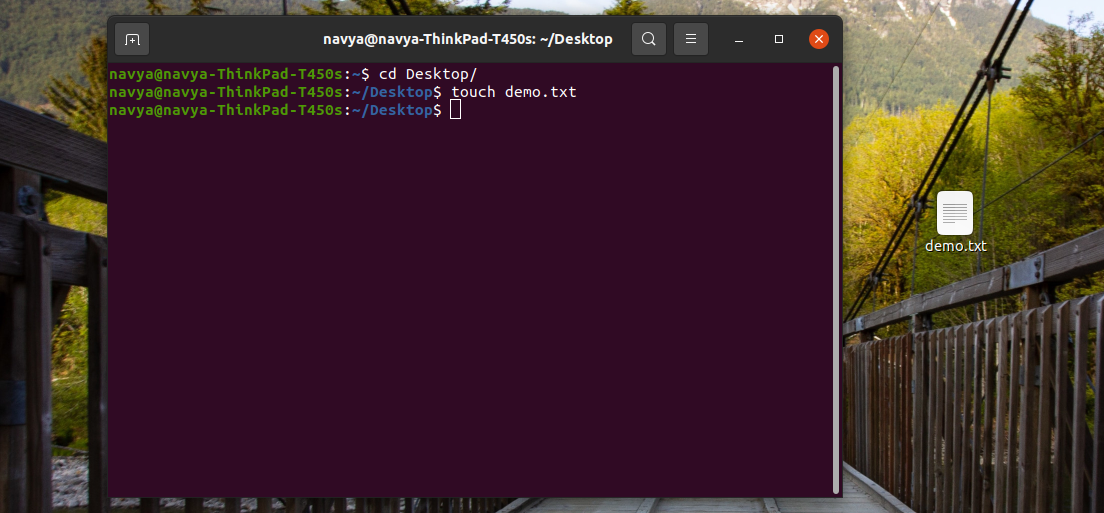
.html - HTML file
Any file with a .html extension is used to create an HTML file which can be considered at the heart of any webpage. Simply, without an HTML file, there is no website.
Terminal command that is used to create HTML file is touch <fileName>.html
In the below screenshot, I’m creating one HTML file on the desktop, but all the HTML files could be created in the respective project folder for easy maintenance.

.pdf - PDF file
Any file with extension .pdf is for storing data in the form of pdf.
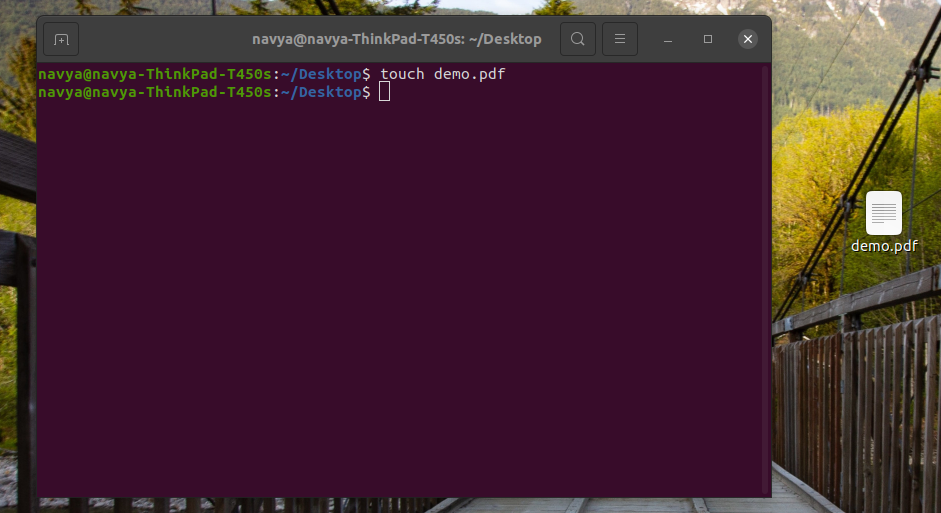
.doc - Document
Any file with a .doc extension is for storing data in document format. Now we will see the following operations for the index.html file, and the procedure for the remaining file types is the same: just change the file name.
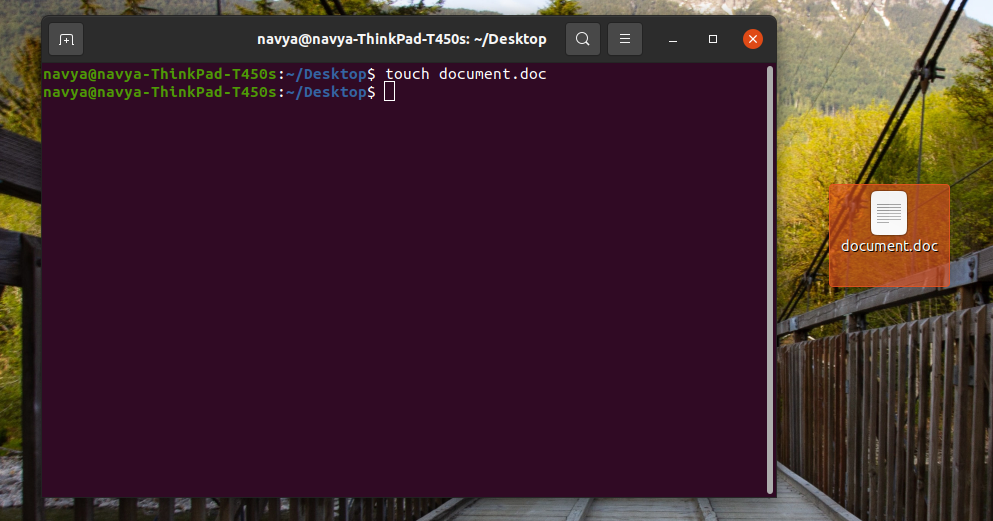
Reading file using the Terminal in Ubuntu:
We can read any type of file with the help of the cat command and the syntax of the command is cat <fileName>

As the file is empty, nothing prints here. Now it will update the file with the following procedure.
Updating file using the Terminal in Ubuntu:
We can update the files with comfortable editors, for Ubuntu we have two major editors namely nano and vim. With the help of these editors, we can update the files.
Now it will update the index.html file by using nano editor. The command that is used for opening the nano editor is sudo nano <fileName>
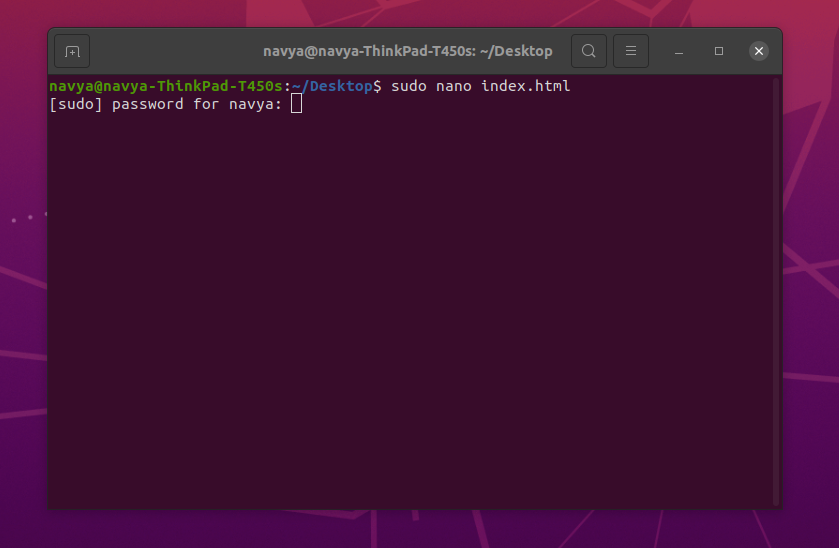
Then give your password and press enter, you can see the nano editor like this
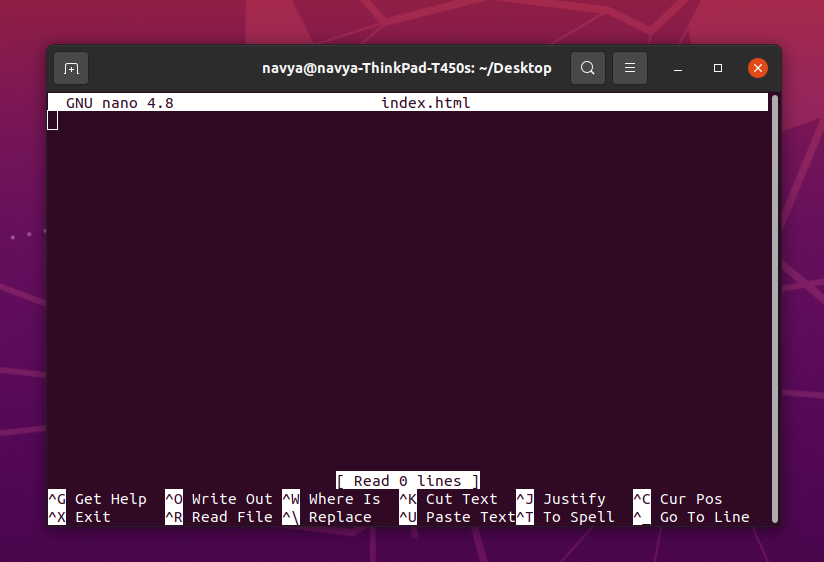
Then type your Html code here,
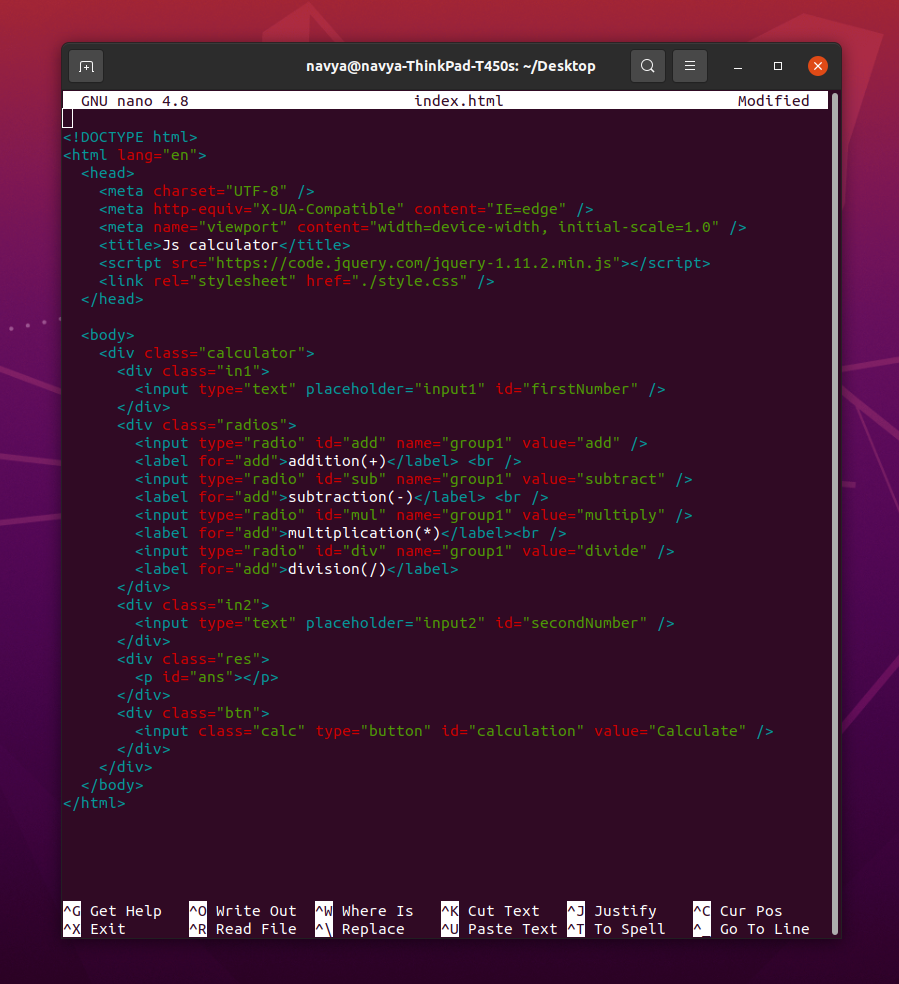
Then press ctrl+x to save the file and then select y, then press enter.

After this, it will ask to confirm the file name as shown below,
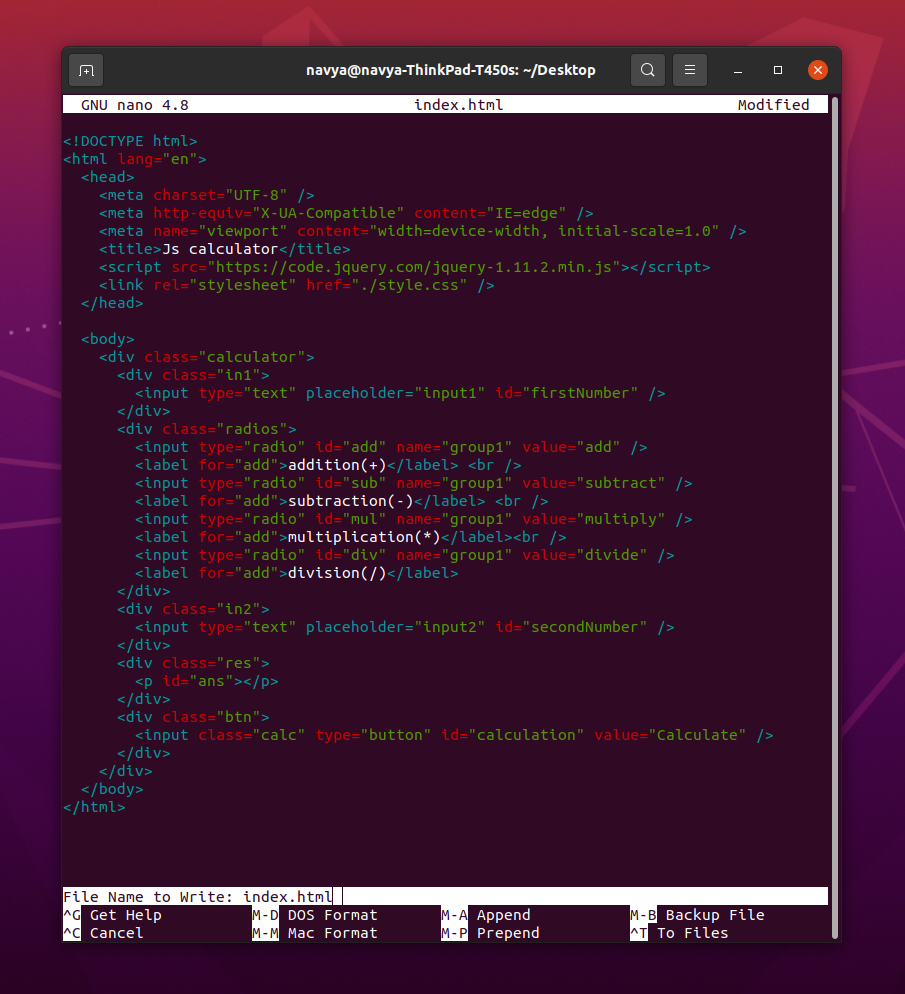
If you want to change the file name then do it, otherwise, press enter.
After updating the file try to read the file, by using the cat command then you can see the data present in the respective file.
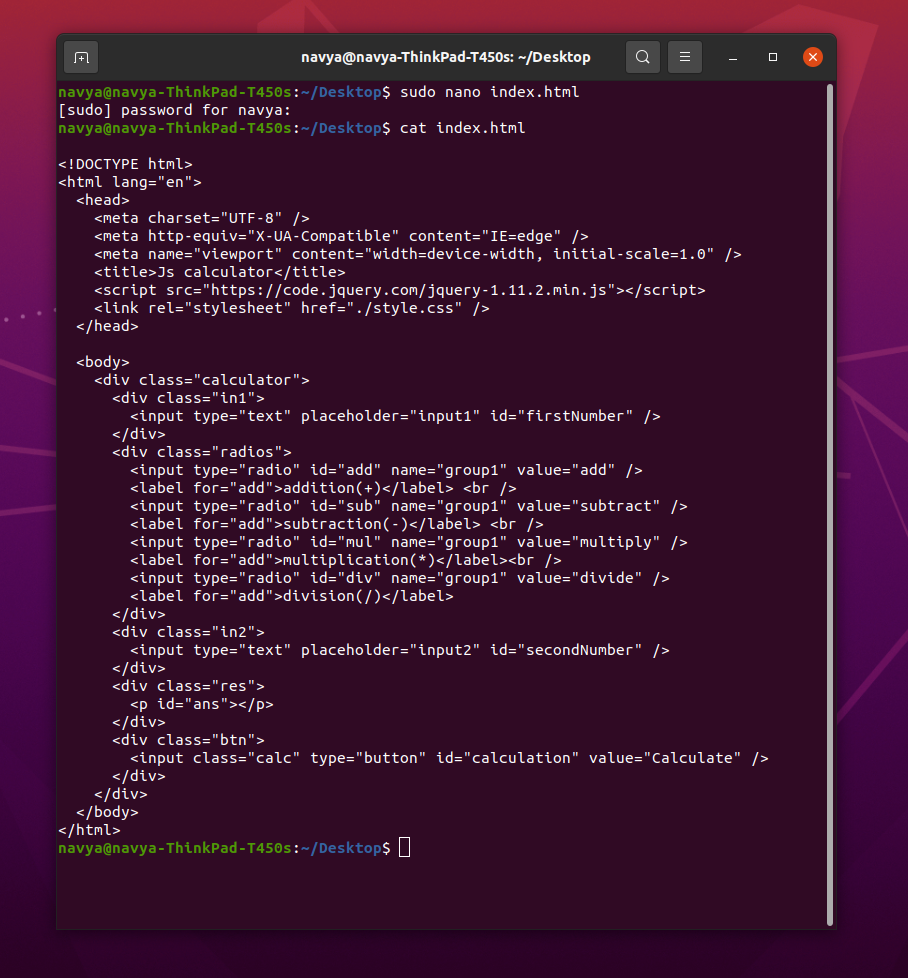
Delete the file using the Terminal in Ubuntu:
Now if you don’t want to keep the file anymore, you can remove it from your project folder. The command that is used to remove the file is
rm -rf <filename>
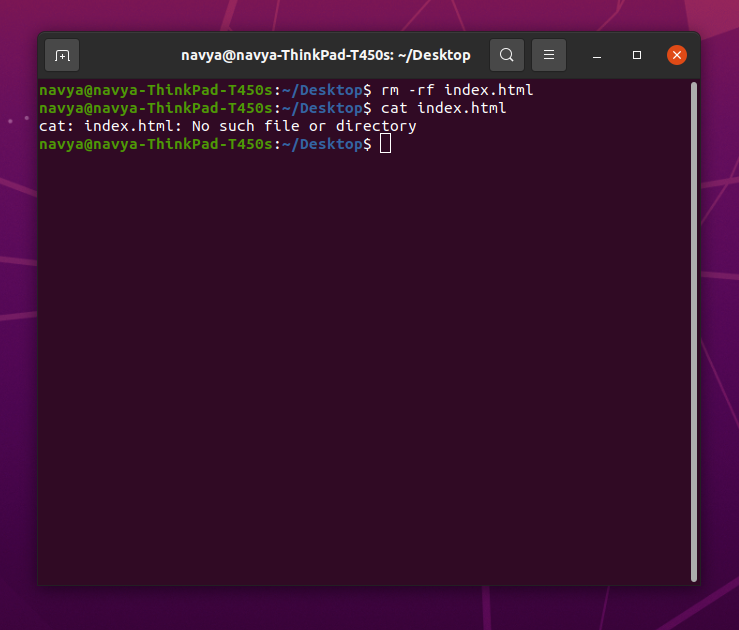
The file exists no more now.
Finally, I want to conclude that managing files in a project is very important because major data is present in different file formats only. So guys, go on and get the practice of all the file-related commands.
Feel free to share your comments and suggestions, thank you.
FAQ:
Is it possible to create files without terminal commands?
Yes, we can. The purpose of creating files is either to store data or to perform any action like with the Html files only the web pages are rendering. So to create and add some data in files we need editors like vscode, atom sublime, etc. So with the help of these editors, we can create new files and we have to save them with appropriate extensions.
Is it possible to create a pdf file with the terminal command and update the data?
Absolutely yes, you can create pdf files by using ubuntu commands and update the data with the help of LibreOffice writer, after all your data addition is done then you have to export the current document as pdf and can access it.




Comments